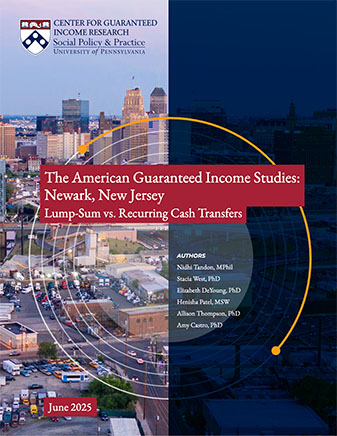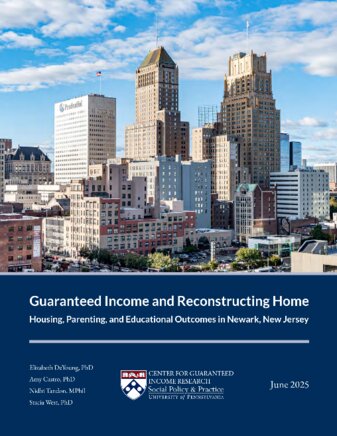Newark Movement for Economic Equity (NMEE)
The Newark Movement for Economic Equity (NMEE) was launched in 2021 by Mayor Ras Baraka.
400
participants
$500
monthly payment
2 Years
duration
$4,800,000
invested in community
The Newark Movement for Economic Equity (NMEE) was launched in 2021 by Mayor Ras Baraka.
400
participants
$500
monthly payment
2 Years
duration
$4,800,000
invested in community
| Program Features | |
|---|---|
| Number of Participants | 400 individuals |
| Amount | $500 |
| Frequency | Cohort 1: $500 2x monthly; Cohort 2: $3,000 2x annually |
| Program Dates | October 2021-September 2023 |
| Eligibility | 18 years old and above, reside in Newark, income below 200% of the federal poverty line, and impacted by COVID-19 |
The Newark Movement for Economic Equity (NMEE) layers guaranteed income over Mayor Baraka’s existing equitable growth strategies and wraparound services provided by various nonprofit organizations. NMEE is one of a number of initiatives established by the Mayor to address the economic insecurity faced by Newark’s residents, and also serves as one component of his comprehensive equitable development strategy for Newark. In a city where one in three residents live below the federal poverty line, the pilot program provides a critical source of financial support. A unique feature of NMEE is the frequency at which individuals will receive disbursements: $6,000 per year for two years, with 50 percent receiving the payments on a bi-weekly basis and 50 percent receiving the payments twice yearly. This approach, along with Newark’s focus on housing insecure individuals and unique approach to selecting recipients, will add significantly to the national body of research on how best to structure an unconditional cash policy on the state and federal level. NMEE worked closely with more than 30 nonprofits and municipal departments on outreach to residents. Those who qualified were randomly selected.
Pilot concluded in 2023.
$44,797
$38,000
21.2%
20%
37.3%
31%
31.2%
40%
8.5%
8%
STOCKTON
STATE MEDIAN


Read research reports produced by the Center for Guaranteed Income Research (CGIR) which offer summaries of key findings, along with in-depth analyses of both quantitative and qualitative data from this pilot.
The guaranteed income pilot launched during a period of dynamic change and economic challenges for pilot participants. The chart below situates this pilot in the context of unemployment and inflation.
The data in this pie chart shows aggregate spending for guaranteed income false participants in Newark, NJ. This includes all non-cash expenditures from the participants' pre-paid debit card that is loaded with guaranteed income payments cohort 1: $500 2x monthly; cohort 2: $3,000 2x annually.
Spending breakdown
Retail sales and services accounted for the largest share of spending, at 41%, followed by Food and groceries (26.52%) and Housing & utilities (11.12%).